Italy 2013 Rome & Florence
19 May
World Energy
I think that the tzars of the world energy situation are doing the best they can, in light of a complex scenario of international politics, economics, and ecological concerns. Sadly, their focus is, I believe, ignoring one of the most stellar energy opportunities, and it is right under our collective nose, so to speak.
Here is my vision for world peace, harmony, and clean air:
Take all boys, of any origin/ethnicity or background, between the ages of 5 and 12 years. Place each boy, for only 2 hours each day, on a treadmill with an iPad at the far end. Note that the iPad will only operate if the treadmill is running above a certain minimum velocity.
That’s really all there is to it. The treadmills are equipped with motor-generators hooked into the national power grid, and the energy generated can be pooled, and used to run all the major cities’ and industries’ requirements. The boys also get their necessary exercise, both physical, mental, and hand-eye coordination. And (perhaps best of all), the parents, teachers, and grandparents get a two-hour break every day.
Today, here in Rome, we are sans treadmills, and the boys are (as always) up and about in an early and feisty fashion. Up on the roof/patio, they have transformed a soup spoon and a trash can lid into a sword and shield for a gladiatorial contest. The ceiling booms and thuds as they run back and forth above our heads in full combat. Well, we’re not saving energy, but it’s still a good start to the day…. we head off to a happy breakfast.
More ROME
Except for evening Mass with a local priest/friend, we have nothing scheduled today. Not a bad thing at all, since we’ve been rockin’ and rollin’ all week with planned tours and a LOT of activity. That time-honored idea, of resting on the 7th day, still appears to have merit.
During the week, we’ve had several opportunities to roam around other parts of the city, getting into the more modern sections where the streets are wider (and sometimes even paved with other than cobblestones!). The architecture is mixed, to say the least. It’s not only a simple case of old adjacent to new; the sheer enormity of Rome’s history has created somewhat unique circumstances. For one thing, antiquity is next to Godly in this area, and anything over 100 years old (which is nearly everything) is considered a national treasure and/or landmark. Think of this (in USA terms) as every building being designated “Historical”.
The consequences are foreseeable: nothing can ever be fixed, modified, or replaced, due to its historical value. All new construction or upgrading is simply done over, around, or adjacent to the old. Everywhere you look, there are filled-in archways, seams in walls of vastly different materials/ages, generally an amalgam of varied builders from varied times. Paint appears to be a rare commodity indeed. Maybe it’s considered an offense to have something look too new? I don’t know.
Everywhere tourists gather, there are (of course) tourist attractions. Horse-drawn buggies, in this case. The kids aren’t really “into” horses, but horses in public on the sidewalk — well, who could resist?
The end result is that even the newer parts of Rome look old and weathered. The entire city has a sense of exactly what it is – – – a succession of buildings and walls and constructions that all took place on top of each other for more than 2000 years.
Wildlife
As you might suspect, this big city is populated largely by city-type fauna. Crows, sparrows and starlings, pigeons and seagulls are in plentiful supply. The seagulls in particular are ever-present and, in a word, vociferous. I have come to believe that seagulls are soccer fans and conduct night games on the rooftops near our apartment. This is the only possible explanation for the all-night-long screeching, hollering, and squabbling of the gulls, exactly identical to the wild Italian soccer-fan scenes we sometimes see on USA television.
Feral cats are also a huge presence. These are a big hit with the boys, who are eager to experiment with the generous offerings of ringworm fungus, body lice, and infectious scratches and bites that these adorable creatures can serve up. Only dire threats of shots with huge needles can keep the kids’ hands off their furry friends.
Cobblestones
A huge percentage of the Roman streets are normally paved with asphalt or concrete. But a significant remainder are covered in dark-gray cobblestones. I had always thought that these dull little tiles were simple slabs of rock laid down on a firm under-surface. But the engineering (as one might expect from the ancient Romans) is considerably more intelligent.
Flat tiles would work only briefly, until they began to tilt and rock under varying loads. Then, they would dig into the surface below and begin to deteriorate the overall roadway. Instead, cobblestones are formed in the shape of a slab-sided cone, with the large end of the cone up and the pointy end down. This wedge-shaped orientation puts the bearing surface above the wedge. Any load cannot easily tip the wedge sideways. With hundreds of thousands of these wedges placed into the ground side-by-side, a truly robust surface is created. Furthermore, if a repair is required, the cobbles can readily be lifted up and placed in a pile, and then completely re-used to restore the road surface.
It’s really quite a clever invention, and were it not for a bone-rattling ride that can easily remove dental fillings, it would probably be more popular world-wide.
The Other Scenery
During our Pompei trip, our guide Claudio commented that the Italian fashion industry was not only a major revenue source for his country, but that it had recently surpassed the French presence which had for so many years been in the leadership position. The reason for this seems to me to be the difference in target markets. My sense of French fashion is skinny runway models wearing $10,000 dresses with all the substance of a nicely air-brushed spider-web. Italian fashion, in contrast, appears to target the “every-woman” approach, with $100 jeans, scarves, and shoes, holy smokes what shoes. The pants and jeans all appear custom-fit, and the flowing blouses, hair and scarves make a lovely complement. The entire assemblage is perched atop impossibly tall high-heeled platform shoes, styled as anything from elegant spikes to sandals and even tennis shoes! I am not exaggerating here – – even the short ones are over 6″ above the ground.
And it’s not just the wanna-be fashion models who don this striking attire; young college girls, middle-aged professional women, and even mothers with strollers all strut the streets atop their perfectly balanced stilts.
I am certain that the women must start wearing these accouterments from around age 4, because they negotiate the tricky sidewalks and cobblestone streets with nary a wobble to be seen. Excellent postures glide across rough pavement and sewer grates without a qualm. The word “statuesque” comes to mind.
Consequently, even if one tires of the fountains, buildings, statues, and fabulous architectures, there is always another scenic wonder to behold, just coming across the piazza.
Pompei
There’s a lot to recommend a visit to Pompei, especially for the restored ruins’ architecture and the sense of the sheer vastness of the disaster. But suffice it to say that small boys are not necessarily impressed. The whining plea of “When can we leave?” droned out every few minutes during our visit. Kids and history seldom mix.
Dead Folks
We spent most of one afternoon doing a very odd tour indeed. It consisted of visits to various areas used for interment of people’s remains: the Catacombs, the basilica of the Capuchin, and the basilica of St. Clemens. These each have their own unique character, history, and yes, a definite hint of “grisly” in some cases.
The central theme of Christian burials is the preservation of the remains. Like the Egyptians, the Christian faith requires the presence of the body for a continuance into the afterlife. (I’m sure that I am stating this in some degree of error, but please forgive me my secular ignorance and take my words as a general indication of the state of things.)
In earlier times, being openly Christian could be a virtual death sentence, so preserving bodies had to be done in stealth, and the practice went underground (no pun intended). The extensive catacomb tunnels under Rome, some 700 miles of them, stored corpses for centuries, until finally (Emperor Constantine’s Christian conversion in 313AD) the faith could be practiced openly.
Once the bodies could be openly visited and respected by the living, the most revered (that is, important or wealthy) were brought to the surface for sanctification, worship, or just above-ground entombment or burial.
Among the more bizarre restitutions was the display of some 4000 sets of bones of Franciscan friars, in a lengthy series of rooms with artful displays of skeletal arrangements. These are not simply the skeletons of friars moved elsewhere and hung on the wall, so to speak. Instead, the heirs took the skeletons apart and used the individual bone pieces to create works of pagan-like art. There is a “pelvis room”, a “femur room”, and a “skull room”, to mention just a few. Although the practice was unusual, it was apparently condoned by the church then and now; but the location is still known colloquially, even among the faithful, as the “bone church”.
And finally, the basilica at St. Clemens is yet another example of both interment, worship, and history. This location is spectacular for the history buff, in that it is a vertical excavation covering almost 2000 years of Roman history. Like many ancient cities, Rome was built, destroyed, and rebuilt a great number of times. During periods of abandonment, the Tiber’s periodic flooding would fill the old ruins with debris and silt, creating a perfect base for the next re-building.
As a consequence, the St. Clemens basilica digs down almost 60 feet below the present ground-floor level of Rome, revealing layer after deeper layer of ancient townships, and finally leveling off at a now-underground stream – – a stream which flowed in the open, under the ancient sun of the second century AD. At each layer, the old walls, arches, rooms, and streets can be seen, having been carefully exposed from their millennia-old grave. Descending the walkways is a journey back through ancient, dusty time. It can only be described as phenomenal.
21 May
The Vatican
Your faith (or lack of it) doesn’t matter when it comes to visiting this amazing site and collection. The sheer magnitude of size, history, and individual/group artistry is something that no visitor to Italy should miss.
Words just don’t work well to describe the scope of what we saw. Ceilings are 40-50 feet high. Every square inch of surface is ornately decorated and detailed.
Fortunately, our guides were fantastically well-educated, English-speaking American brothers of the order of the Legionaries of Christ, who have a local seminary in Rome. The knowledge and insight provided by these kind souls was indispensable in our appreciation of what we were seeing.
Surprisingly perhaps, I’m not able to spend a lot of words on this topic/visit. The magnificence, grandeur, and sense of time do not easily transcribe to any written word. More than that, the overwhelming presence of 17 centuries’ worth of diligence of faith, church, and emperors; the truly incredible contributions of artists throughout time; the absolute genius of Michelangelo; all these things must truly be personally experienced for any hope of even the slightest comprehension. I feel I must apologize for my inadequacy to do adequate wordsmithing on this one.
Here is a simple example; the ceiling of the Sistine Chapel, painted by Michelangelo 500 years ago, when Christianity was already old news.
To be sure – – it looks different when you’re standing there.
21 May
Rome to Florence
After our multiple positive experiences with guided tours, we decide against the rapid-transfer train ride we previously booked, and we arrange for a guided trip/tour from Rome up to Florence. This turns out to be an excellent decision.
We drive leisurely through the rain-soaked countryside, soaking up the feeling of rural Italy while getting mile-by-mile information and insights from our driver/guide.
On the way, we visit Orvieto and Siena. Although Siena is the more renowned, we all agree that Orvieto is the highlight of the journey.
Orvieto is a classic medieval township. These tiny city-states were independent ecologies and economies in the dark uncertainty of an era when only might-was-right in a lawless continent. Towns had many requirements to exist and prevail, but principal among them were the need for water, farm-able land, and a defensible location.
The hilly surrounds of the western Italian peninsula provided many opportunites for hill-top communities; Orvieto is perched on top of an impressive table-top mountain some 300-400 feet above the surrounding terrain. The cliffed edges of the natural geology are topped by sheer stone and brick walls. The end result is a truly formidable fortress of a town, a story-book like burg of some 30,000 souls at one time. Only two natural approaches were easily gated and defended, making the town nearly impregnable.
Furthermore, the lofty vantage afforded long-distance views in all directions of the surrounding flatlands; any approaching military force could easily be spotted well in advance of an attack. If this happened, the farmers and outlying residents could retreat to the safety of the town walls, where the Orvieto citizens would repel or simply wait out an assault.
So, (my first question) how does a town 400 feet above the river below find enough water to sustain 30,000 residents? Simple: a well. But for sure not a simple well. The well at Orvieto is famous throughout Italy for its uniqueness and magnitude.
Orvieto citizens kept their water source inside the massive walls, and they did this by building an “inverted tower” down into the ground. The walls of the tower-well are hollow, and two serpentine ramps drop over 16 stories into the earth. One ramp takes a continuous stream of pack animals down to the water level 160 feet below. The second ramp, intertwined with the first, allows the same stream of water-carriers to wend their way back to the surface, without either the empty or burdened animals having to cross paths.
Many enthusiastic tourists descend the hundreds of steps (as did Karin and the boys and I), and make the huffing-puffing arduous climb back up. Many of those tourists lean over the wall into the well center to photograph their progress. An unlucky few seem to have lost their grip on everything from cameras to sunglasses. As a consequence, the well, in addition to being filled with perhaps thousands of euros worth of coinage, is also home to muiltiple tourist souvenirs. Sunglasses, cameras, and even key fobs twinkle in the rippling light far below the small blue circle of sky above.
Florence and our New Home
We arrive in Florence and check into our new digs. It’s smaller, prettier, and both more and less convenient/organized than the Rome apartment. The guy who meets us makes certain that we know not to turn on more than one stove burner (electric) at a time, or the circuit breaker (for the entire apartment building) will trip. We find out for ourselves that the hot water is sufficient for 3 of our 5 showers.
Our small little outside deck looks into a quiet inner rectangle of multi-story apartments, and across the roofs of central Florence. The lights work, the beds are comfortable, and the toilets flush and don’t run. Life is perfect. After the long drive/tour day, we surprisingly have a lot of talk-energy, and we end up chatting until nearly midnight before turning in. A splendid day.
Of course the scenery is worth any reasonable hardship. The Arno River and the town are both pure postcard material.
22 May
Il Giorno del Orrechio (day of the Ear)
This morning, we arise late, with no particular plan but to get breakfast and see a little of the town. After some brief Internetting, we discover that the BIG attractions like David are long-lined, expensive-ticket affairs. Not being big art-enthusiasts (not to mention the non-enthusiasm of the kids), we decide on a walking tour, beginning with breakfast.
Around 10:30 or so, we’re waiting for our first cup of coffee and Bryce’s usual wild impishness has deteriorated — at first to a dull silence, and finally into a plaintive whimper. Bryce has an earache. We are all very concerned about the possibility of an infection, and we decide to be proactive about the issue, and get Bryce some professional medical help.
At first, we believe that we are within walking distance in this small town, and we spend 20 anxious minutes hoofing it across town to the hospital at Santa Maria Nuovo. Ooops, too bad for that decision. Even for such a simple ailment, they refuse to treat a child, and they send us way across town to a big medical facility. Another typical Italian wild cab ride. By now, we are almost accustomed to the sound of a car’s paint wearing off, by virtue of zero proximity to other cars’ paint. We zip past vehicles with seemingly less than paper-thin margins. I am constantly expecting a crunch, and totally mystified by how these guys retain their mirrors – – but they must value them highly, as they are constantly folding them in and out as they squeeze through impossible gaps in traffic.
At the hospital, the usual long waits, with crappy machine-vended coffee, are amply rewarded by a peaceful Bryce emerging from the pale green caverns of the medical wards. Bryce is smiling (after a pain-reliever), and we are smiling also, having learned that it is simple inflammation and not an active infection.
By this time, 3PM has arrived, and we are all ravenous. We find a wonderful restaurant on the edge of the Piazza del Vecchio. With splendid sculptures on display across from us, we dine on fabulous steaks, salads, wines and chocolates. Our waiter is a jewel of a resource, helping us with menu choices and the kids’ satisfaction with the whole affair. We toast yet another fine day, having wrested victory from defeat.
Martina and the boys head for home base, and Karin and I enjoy a couple of hours of solo shopping on the streets of this historic town.
Life is good.
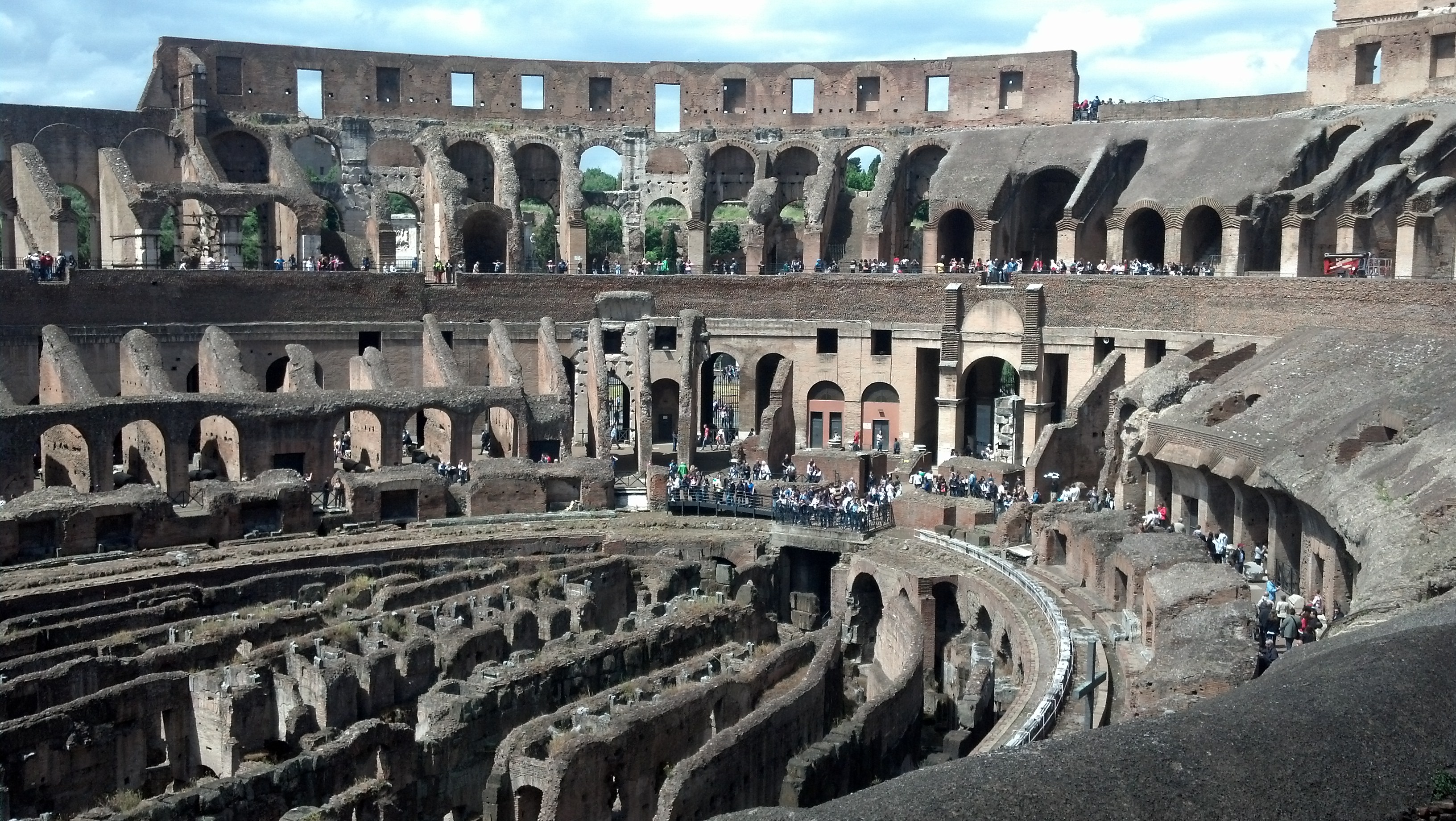
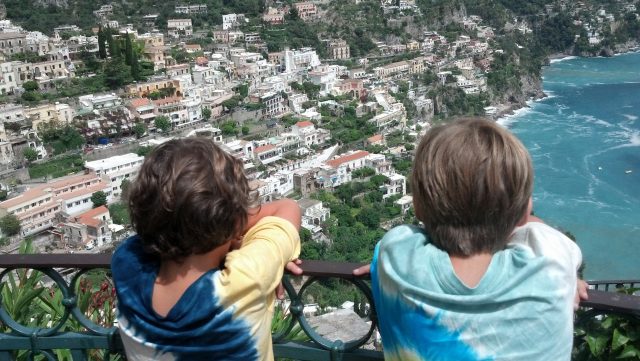
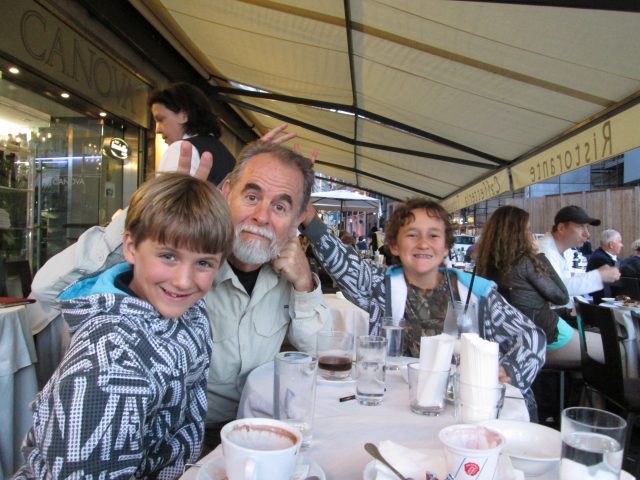
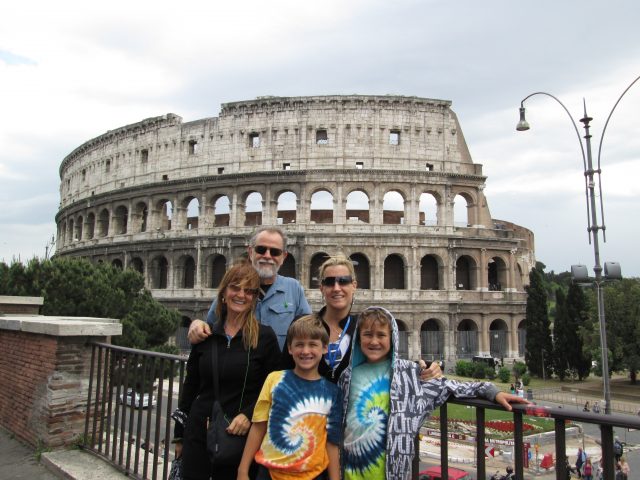
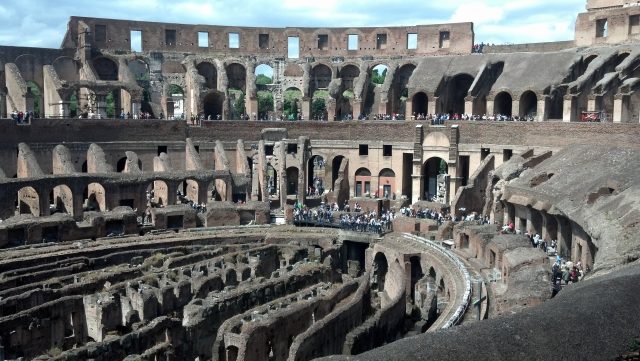
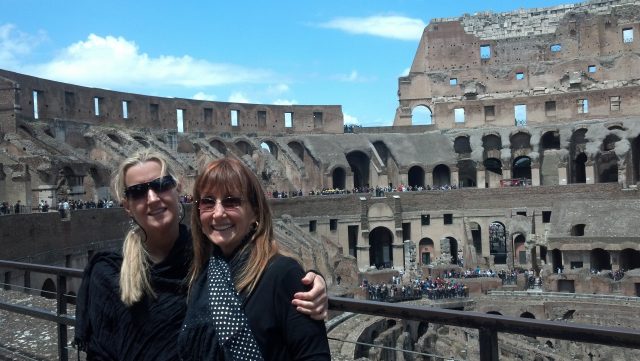
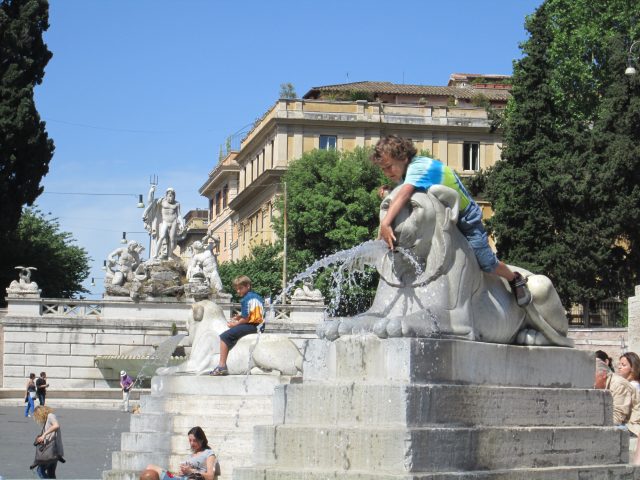
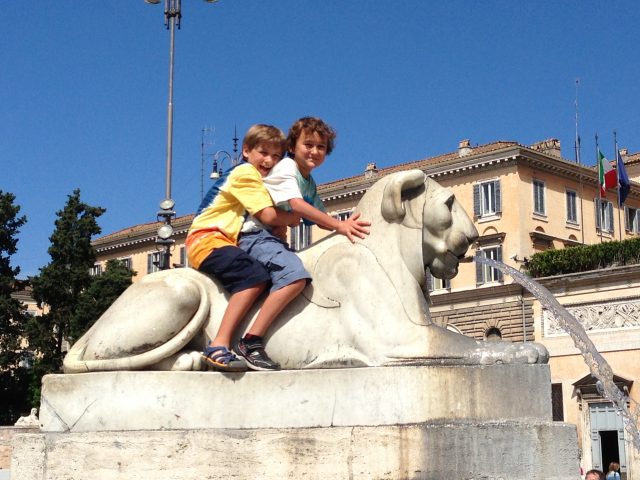
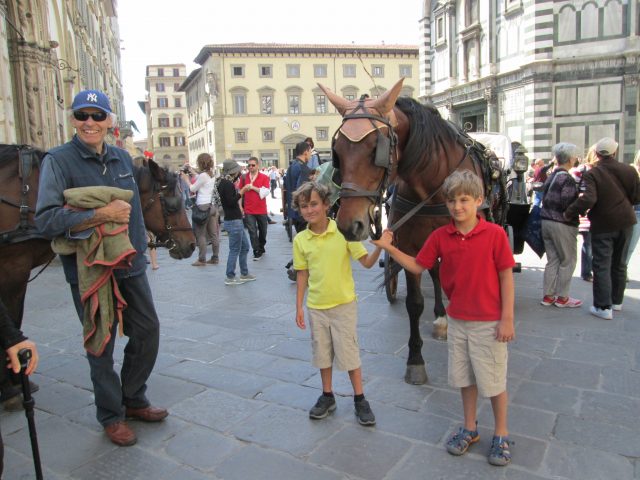
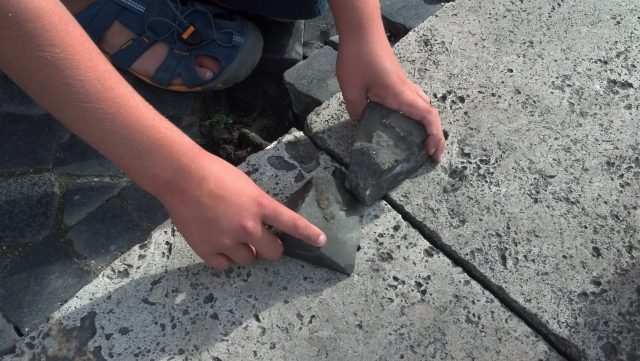
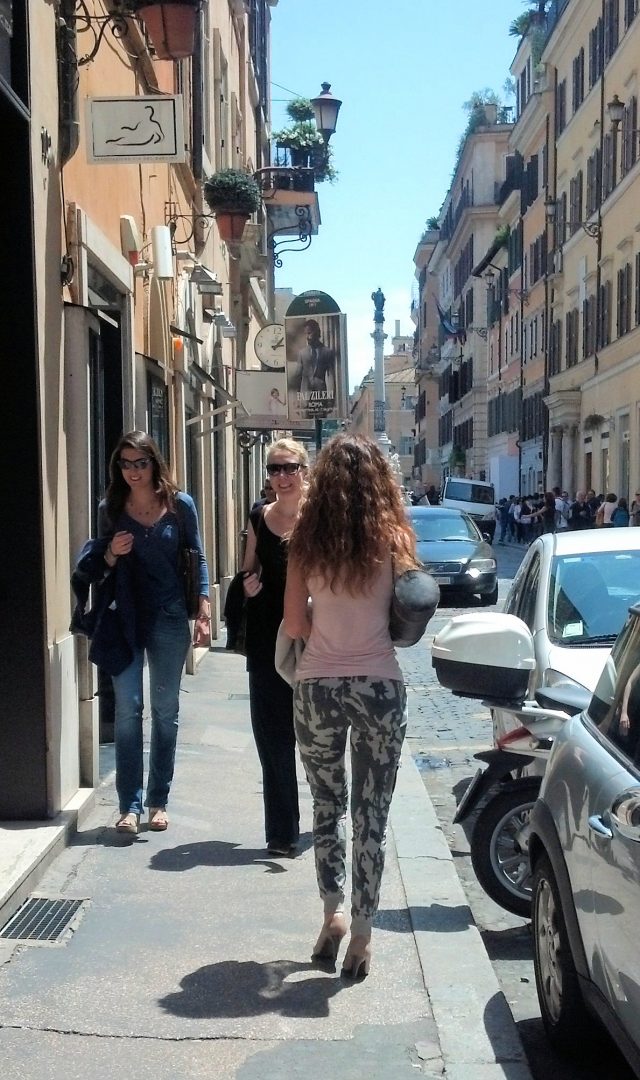
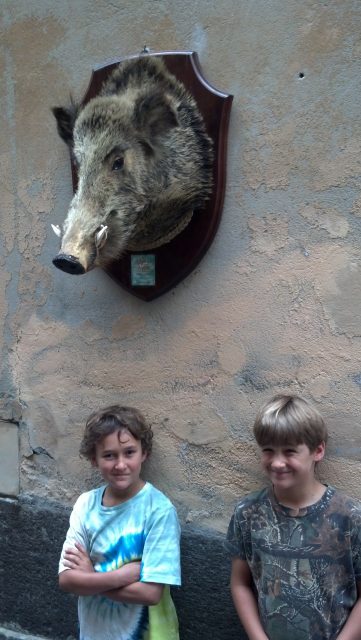
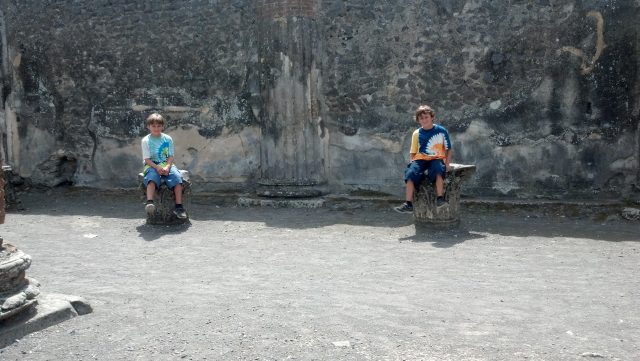
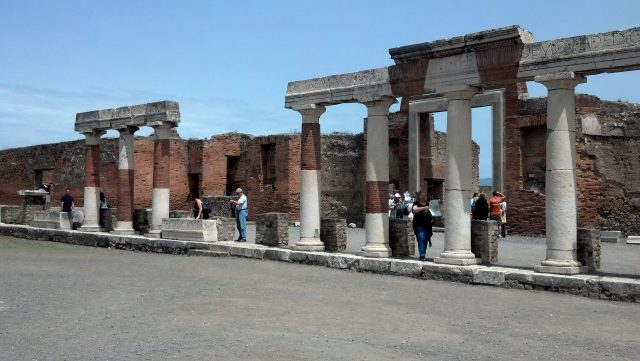
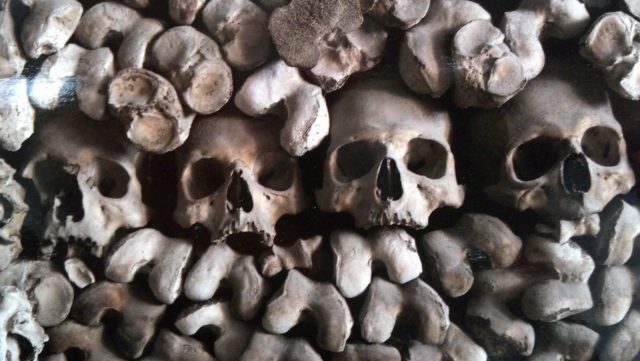
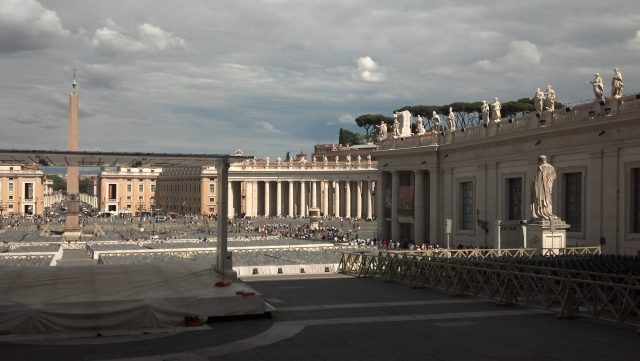
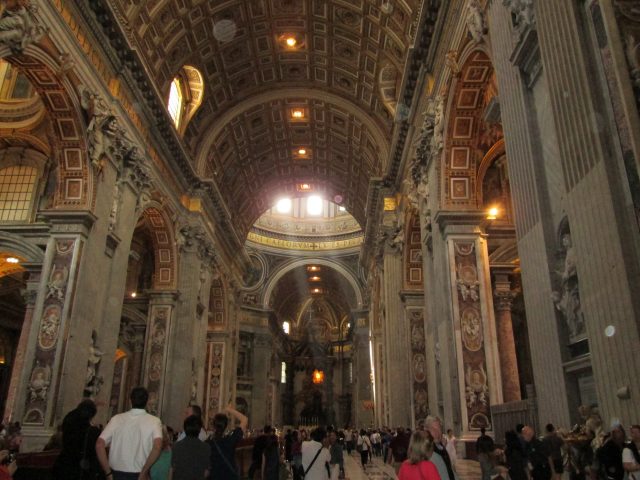
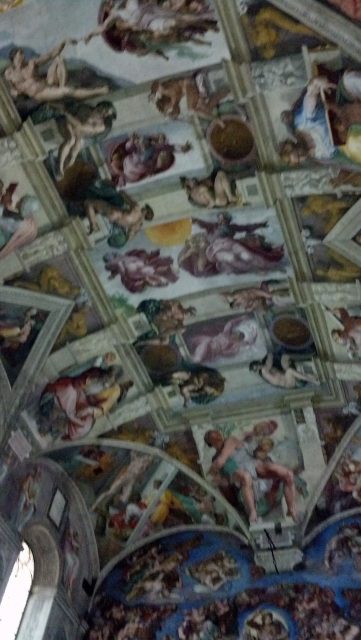

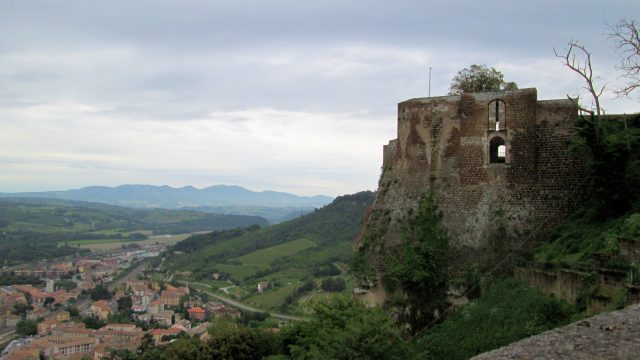
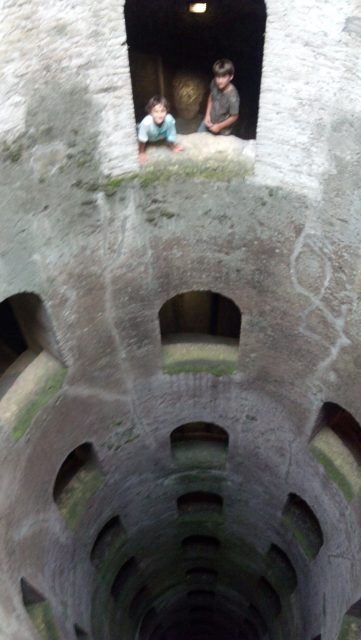
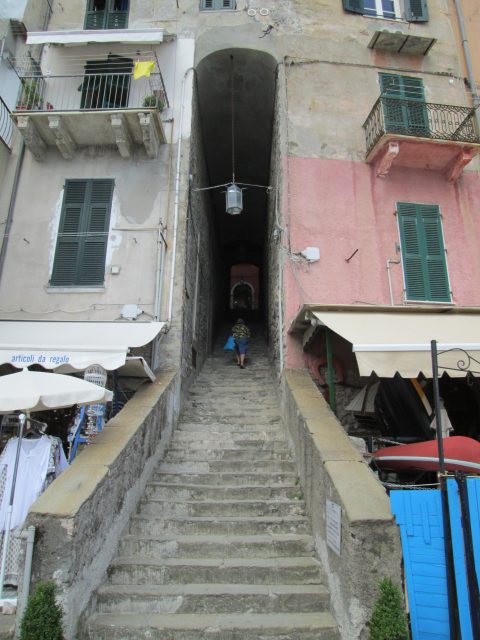
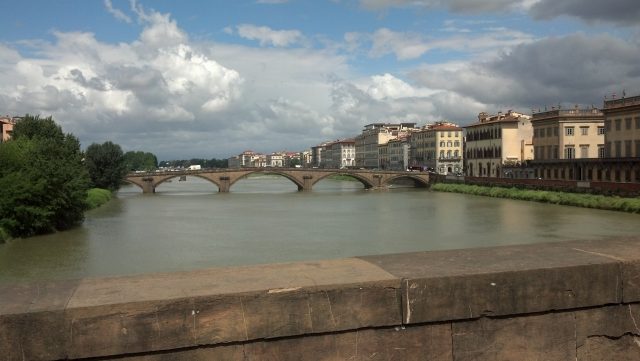
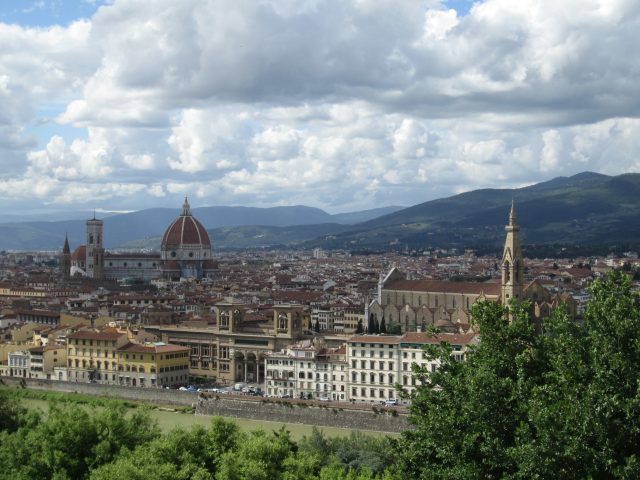
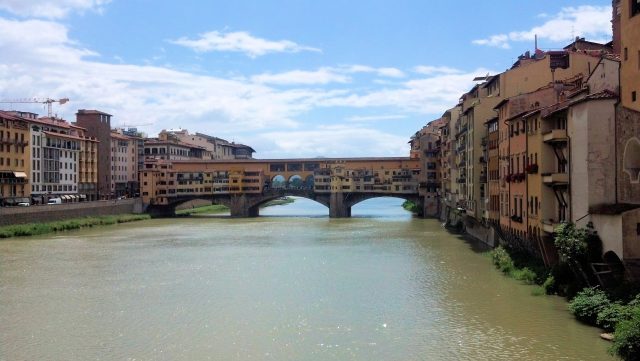
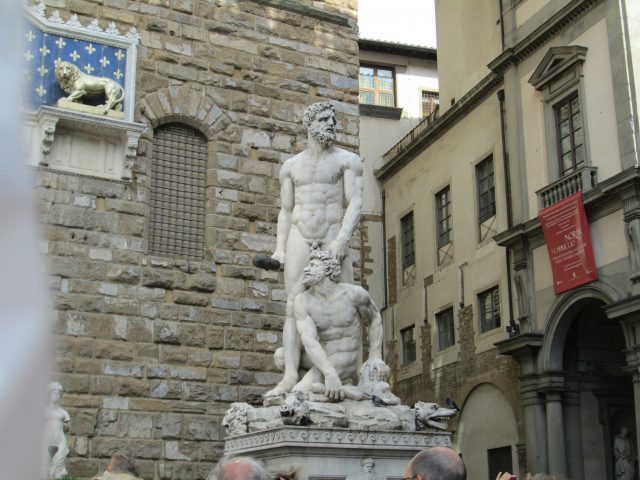
Comments
Italy 2013 Rome & Florence — No Comments
HTML tags allowed in your comment: <a href="" title=""> <abbr title=""> <acronym title=""> <b> <blockquote cite=""> <cite> <code> <del datetime=""> <em> <i> <q cite=""> <s> <strike> <strong>